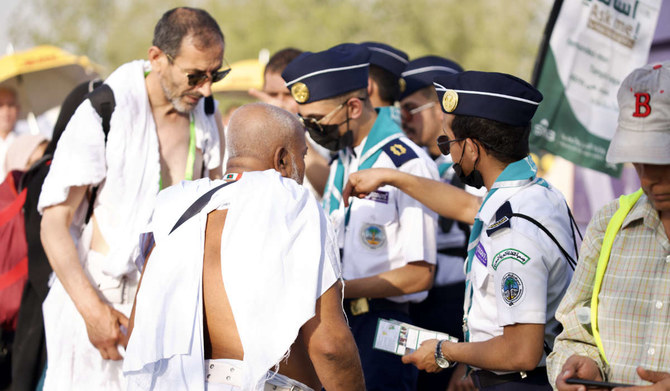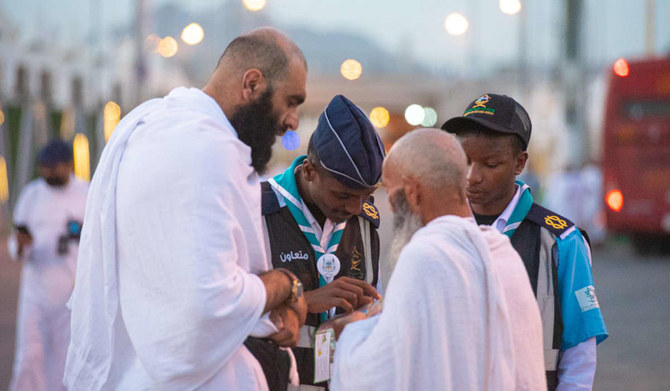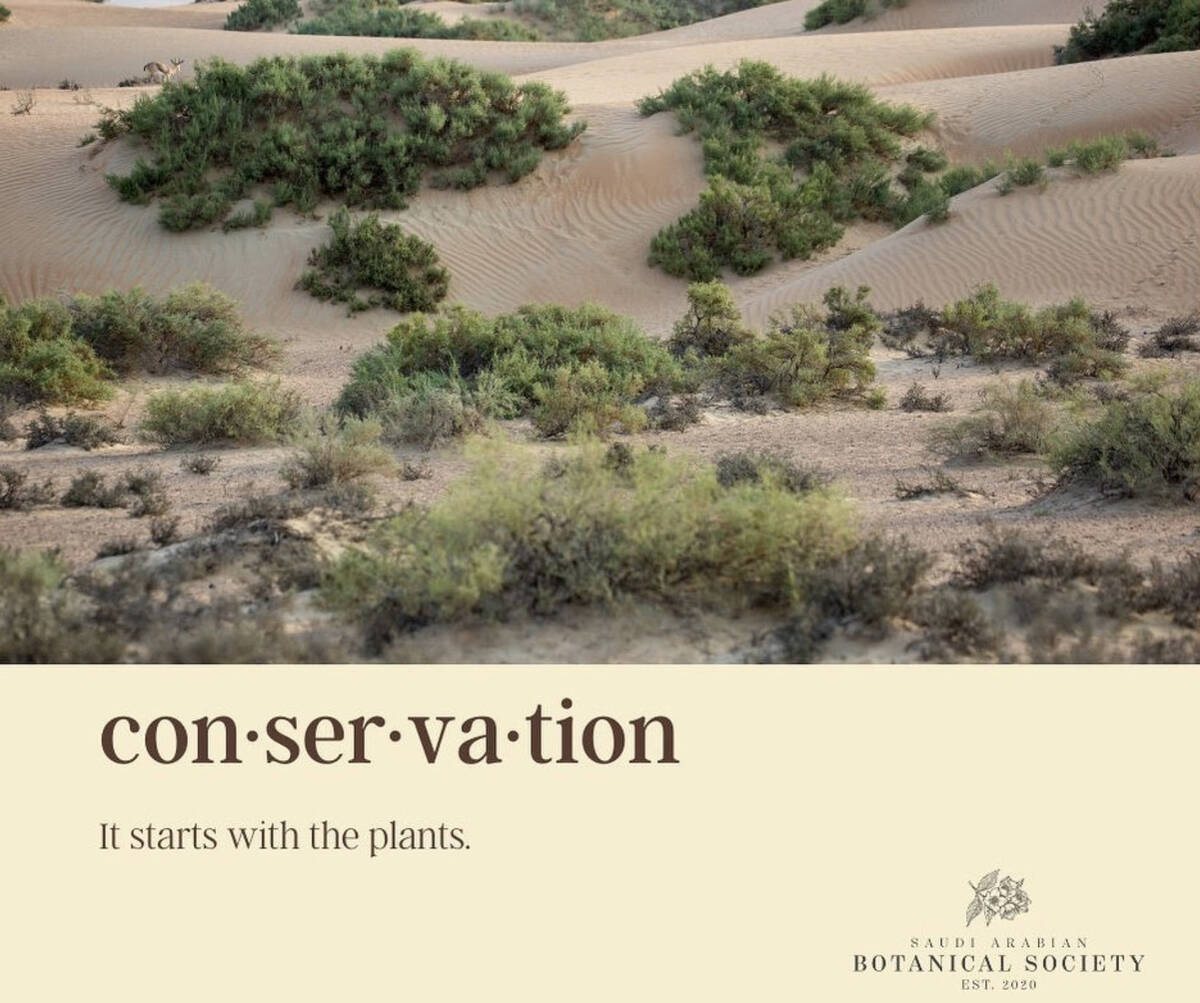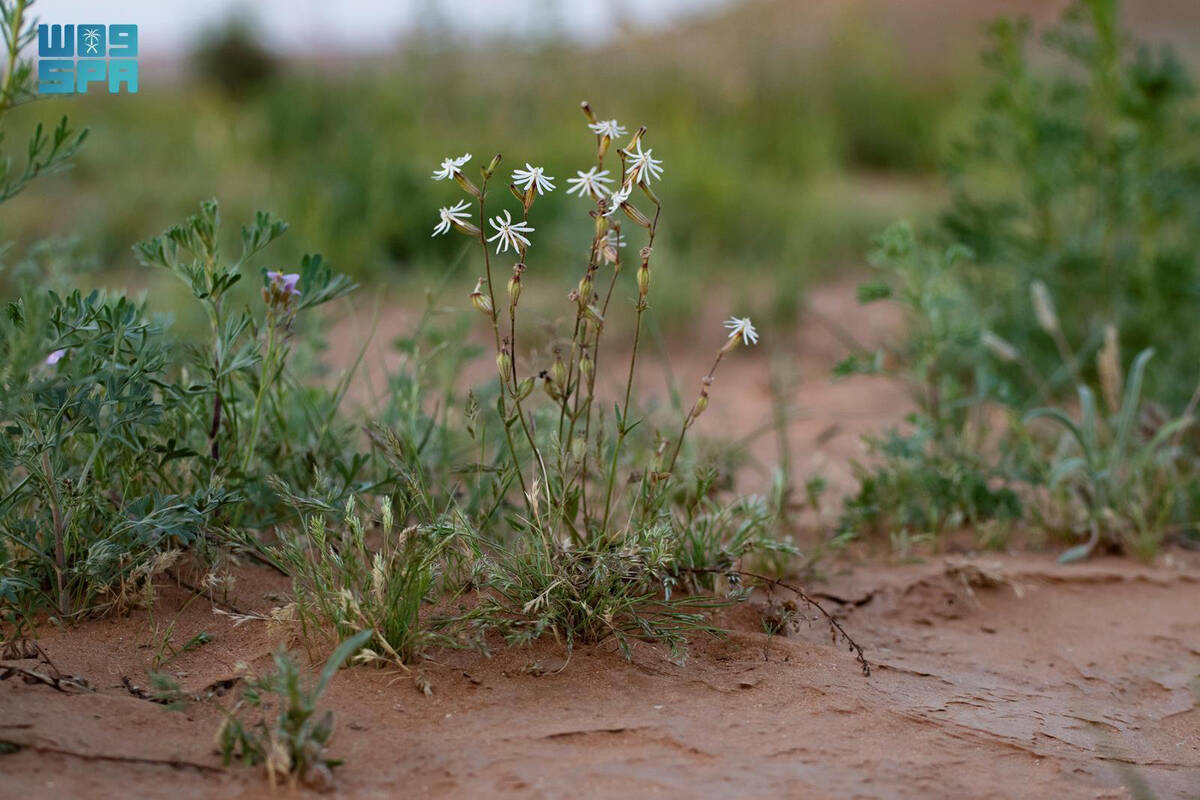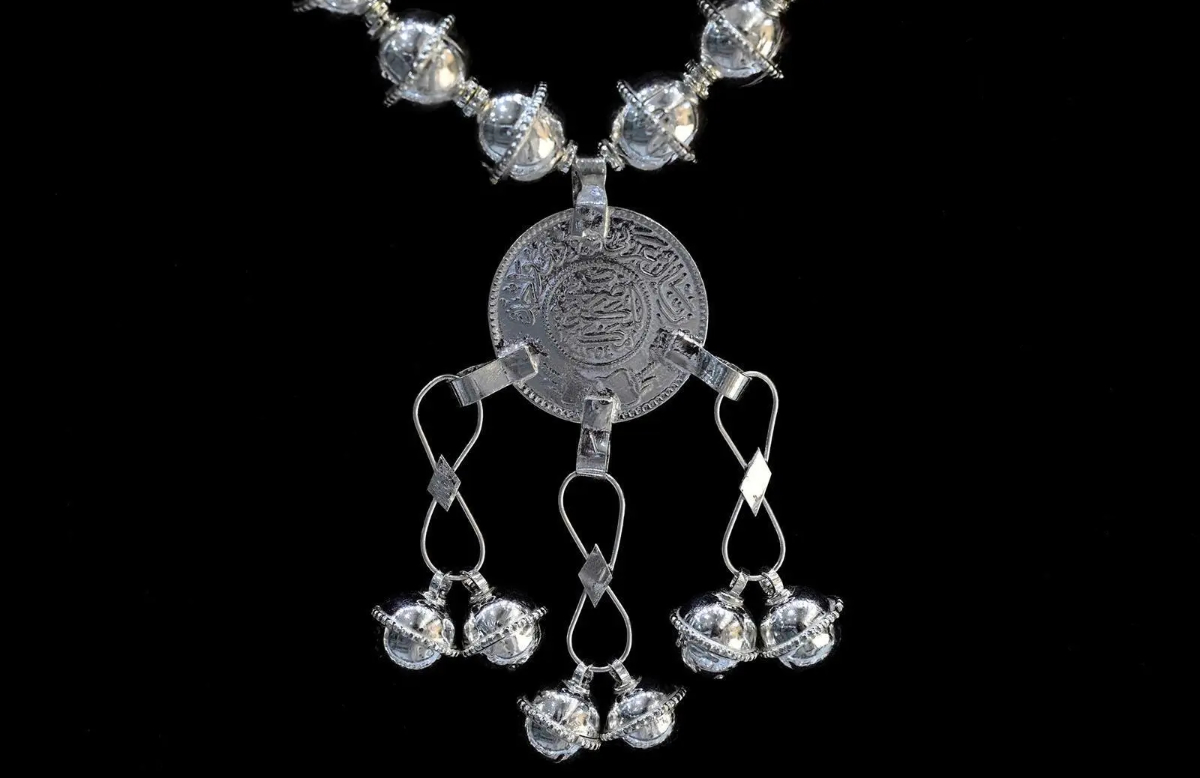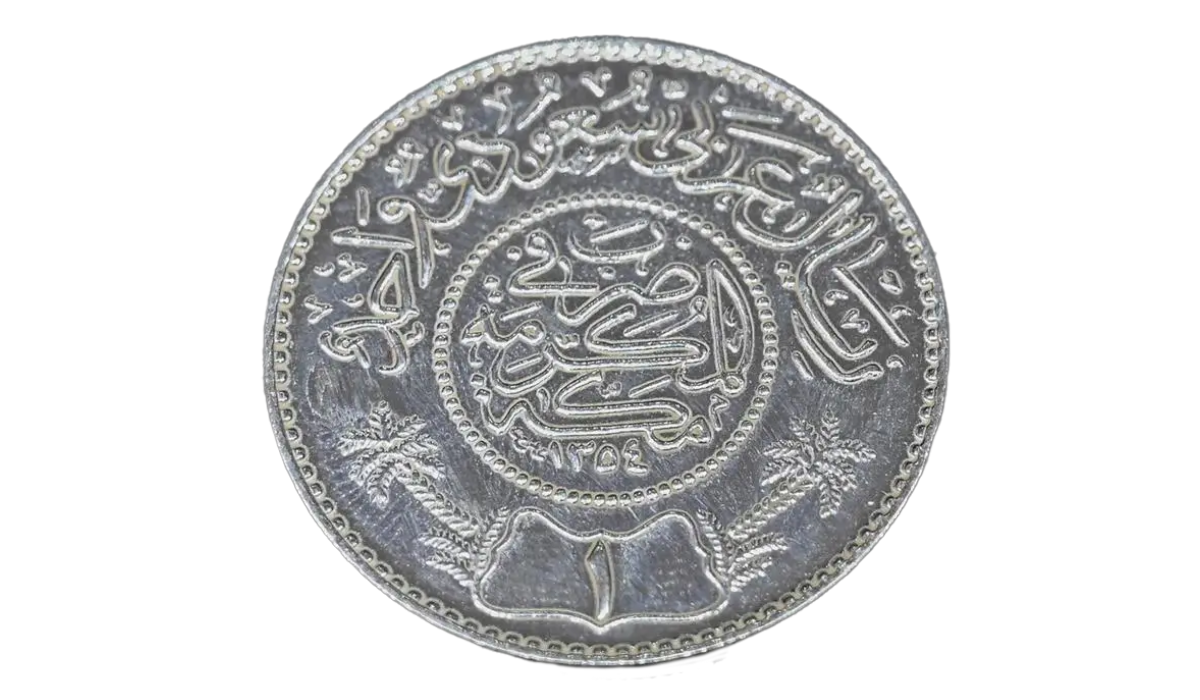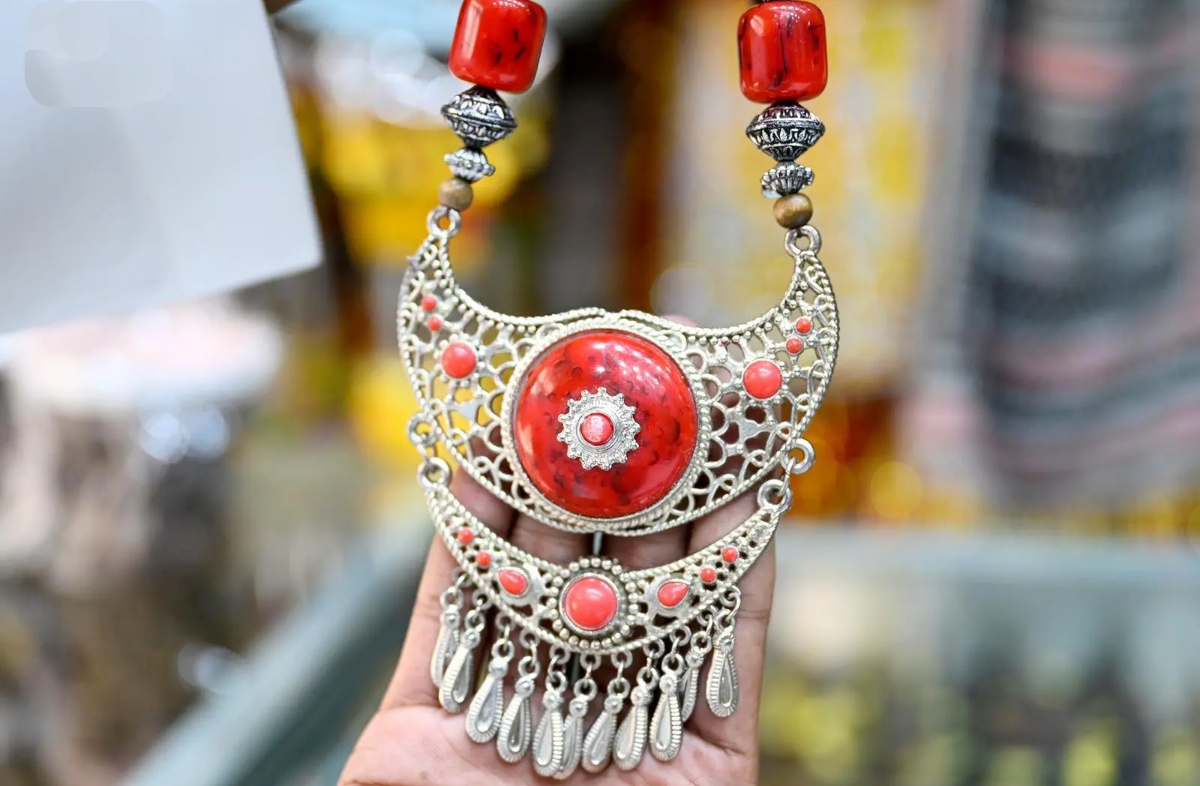JEDDAH: Each year, numerous scouts from all corners of the Kingdom gather to assist pilgrims during Hajj.
Regardless of age or gender, these dedicated individuals devote their time and energy to supporting pilgrims to fulfill their Hajj rituals with ease.
This year, 3,500 scouts have been deployed around the holy sites in Makkah, according to the Saudi Arabian Scouts Association.
They are classified into two age groups: the advanced scout category and the ranger’s category. The advanced scout category consists of scout members aged between 15 and 17. The ranger’s category comprises individuals aged 18 to 22, including scout leaders (150 of whom are women) and friends and pioneers of SASA.
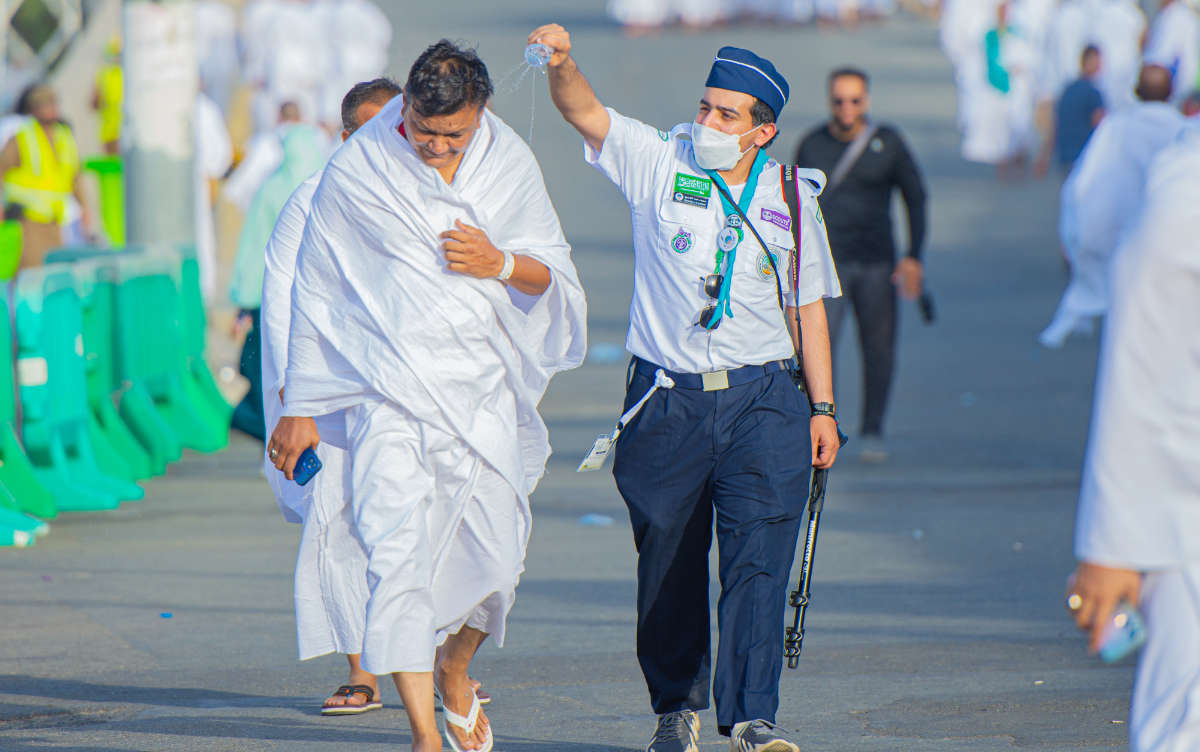
The scouts help pilgrims by guiding them, assisting them, and ensuring that they reach the holy sites or their designated camps. (AN photos by Huda Bashatah/Supplied)
The scouts have been distributed among government-related entities, such as the Ministry of Hajj and Umrah, Ministry of Health, Ministry of Commerce, Makkah municipality, Hajj Security Forces, and the Kingdom of Saudi Arabia Project for the Utilization of Hady and Adahi.
The scouts affiliated with the Ministry of Hajj and Umrah primarily focus on assisting lost pilgrims by providing guidance and directions, ensuring they reach their designated camps safely.
HIGHLIGHTS
• The Saudi Arabian Scouts Association has been active since 1961.
• This year, there are 150 women among the scout leaders.
• The scouts have been distributed among government-related entities, such as the Ministry of Health and Hajj Security Forces.
• The scouts working with the Makkah municipality ensure vendors on site are following all regulations.
Mubarak Al-Dosari, a pioneer scout and the general supervisor of the SASA media committee, said: “One of our top priorities is to promote the essence of volunteerism and foster a sense of national identity among scouts, rangers, and scout leaders. We also strive to present a positive and vibrant portrayal of Saudi scouts serving pilgrims.”
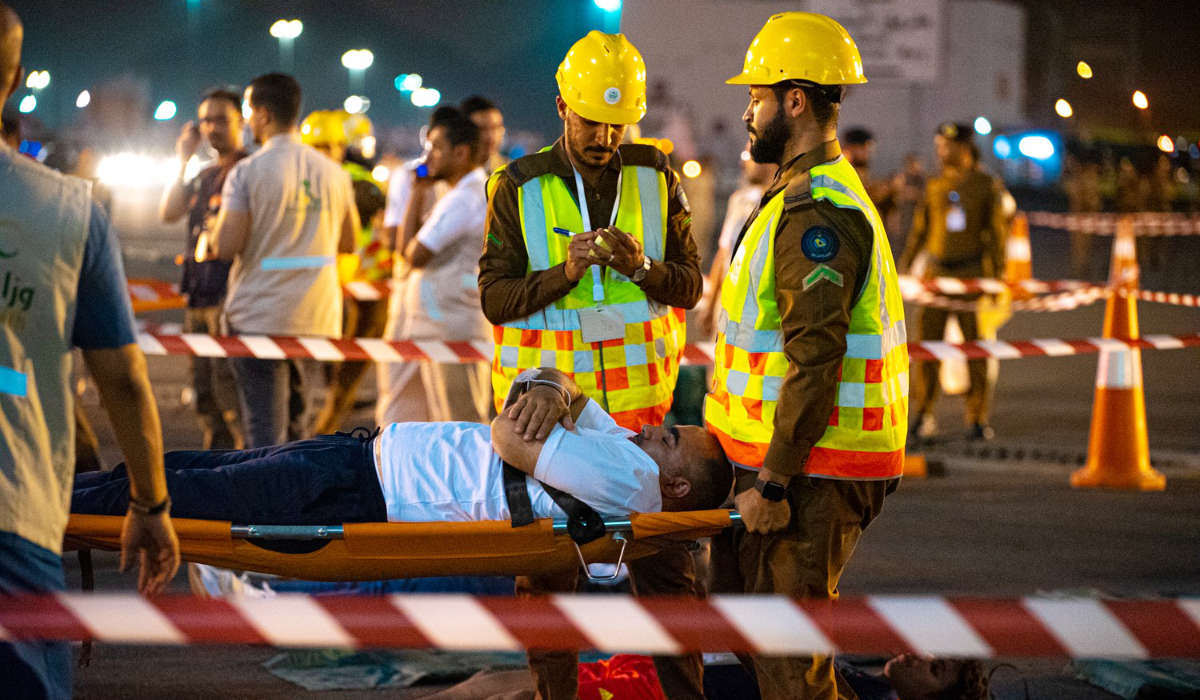
The scouts underwent extensive practical training in civil defense, first aid, physical fitness, rescue operations, security awareness, and firefighting. (Supplied)
In collaboration with the Saudi Ministry of Islamic Affairs, Dawah, and Guidance, the scouts are responsible for coordinating the pilgrims’ access to the ministry’s offices in the holy sites and distributing Hajj-related books and publications in various languages.
Those working with the Ministry of Commerce are tasked with monitoring the prices and quality of food items available in the holy sites. They also oversee the validity of licenses granted to vendors and cooperate with ministry teams to investigate cases of potential commercial fraud.
The scouts working with the Makkah municipality ensure vendors on site are following all rules. They also work together with the Ministry of Health to help direct pilgrims to healthcare facilities.
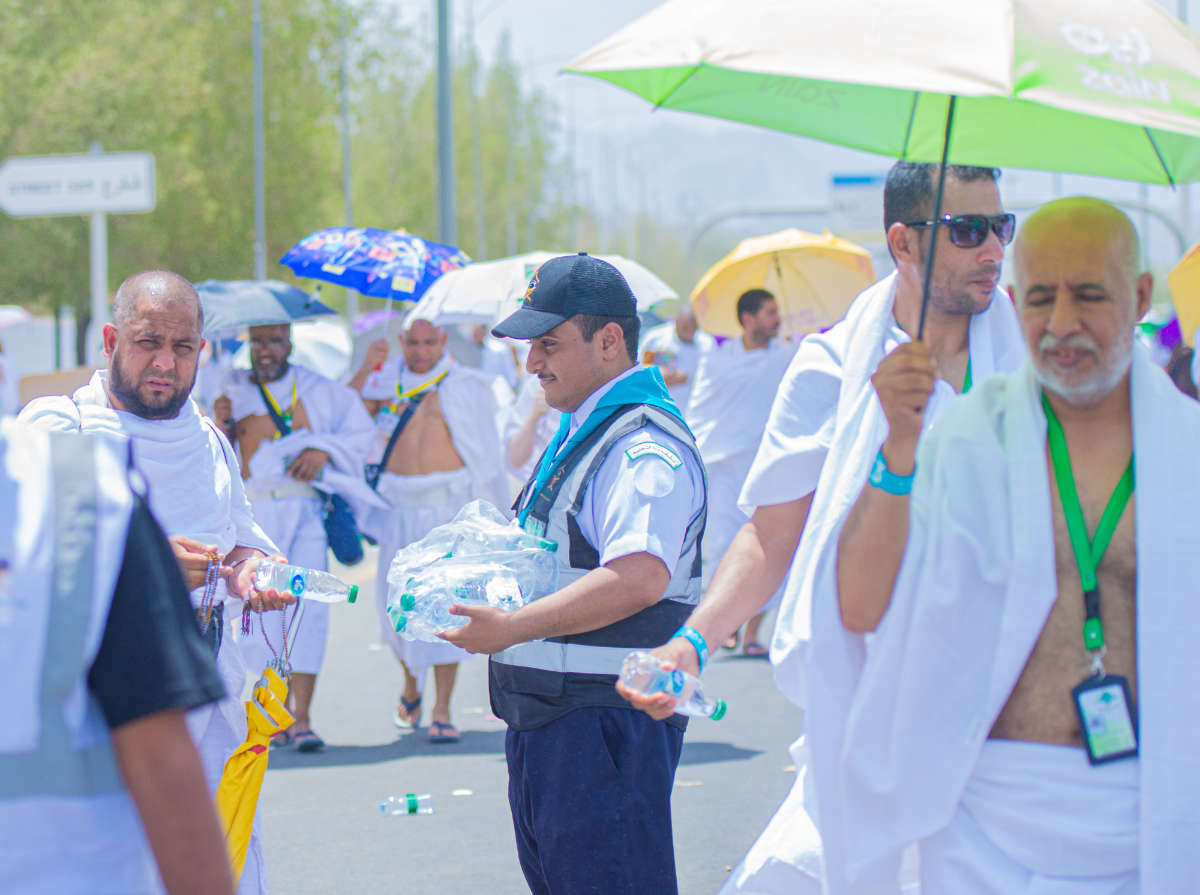
The scouts help pilgrims by guiding them, assisting them, and ensuring that they reach the holy sites or their designated camps. (AN photos by Huda Bashatah/Supplied)
The Islamic Development Bank engages scouts in coordinating the arrival of pilgrims at the slaughterhouses, offering on-the-go guidance, and overseeing the movement of pilgrims from their accommodations to the Jamarat.
Before arriving at the holy sites, the scouts underwent extensive practical training in civil defense, first aid, physical fitness, rescue operations, security awareness, and firefighting.
Al-Dosari said: “The association has taken many steps with (its) partners to make this season a success by all standards.”
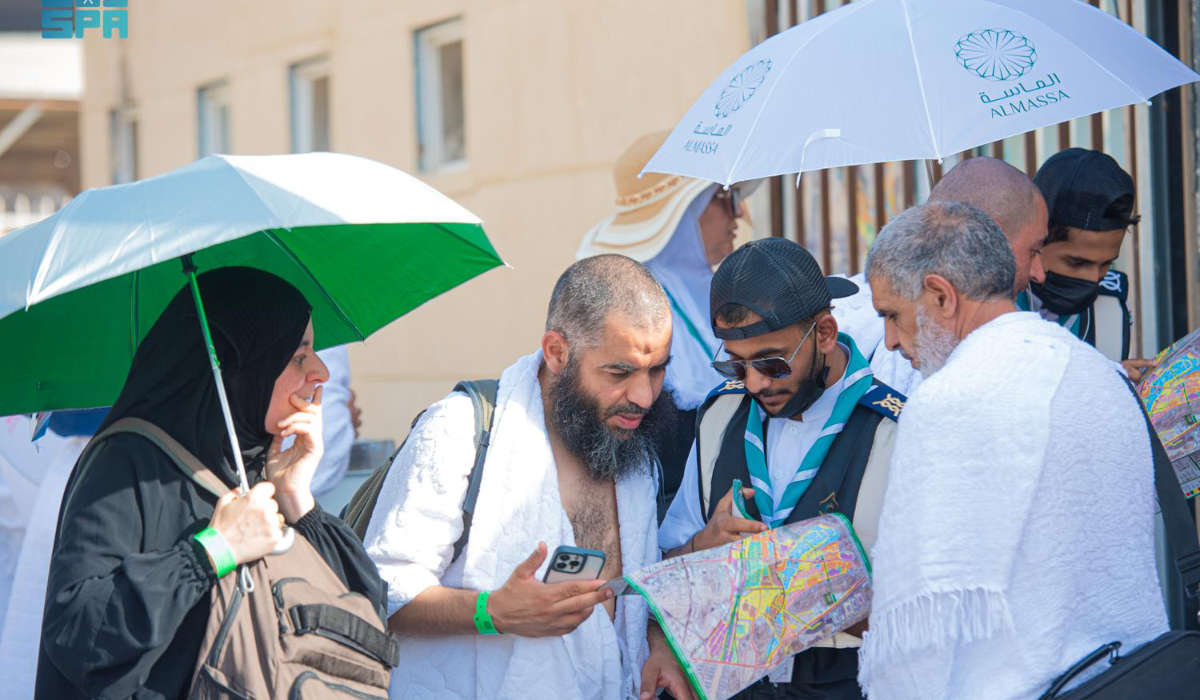
The scouts underwent extensive practical training in civil defense, first aid, physical fitness, rescue operations, security awareness, and firefighting. (SPA)
The general supervisor also said that each year, camps also adopt the latest technologies to assist pilgrims.
Scout leaders spoke to Arab News about serving pilgrims in Makkah and other holy sites.
Ahmed Rawas said: “Serving pilgrims is considered a great honor that fills all the citizens of this country with pride.”

The scouts help pilgrims by guiding them, assisting them, and ensuring that they reach the holy sites or their designated camps. (AN photos by Huda Bashatah/Supplied)
Participating in the service of pilgrims is a prestigious opportunity, Rawas said, highlighting the significant efforts and resources, both technological and human, that the Kingdom has dedicated to various projects aimed at assisting the pilgrims.
Abdulaziz Al-Rabee also echoed similar sentiments and expressed joy and enthusiasm in working alongside his colleagues.
One of our top priorities is to promote the essence of volunteerism and foster a sense of national identity among scouts, rangers, and scout leaders. We also strive to present a positive and vibrant portrayal of Saudi scouts serving pilgrims.
Mubarak Al-Dosari, General supervisor of the Saudi Arabian Scouts Associaton media committee
Issa Al-Taysan said that “serving pilgrims is a medal of honor from God, who invites people of this country to work with dedication and sincerity.”
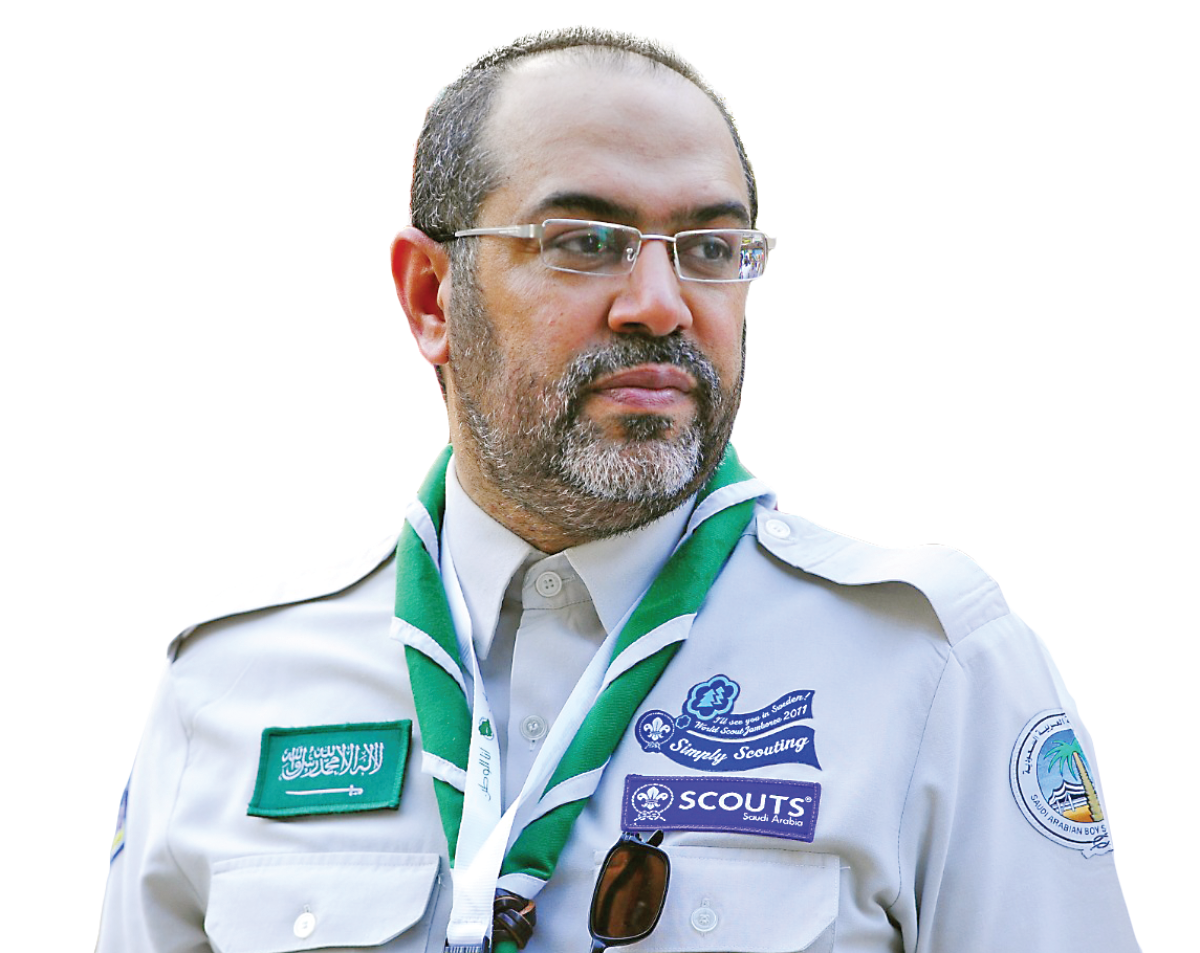
Mubarak Al-Dosari, General supervisor of the Saudi Arabian Scouts Associaton
It is worth mentioning that SASA stands out as one of the initial global associations to receive the Global Support Assessment Tool, a recognition typically given to associations that meet international quality standards established by National Scouting Organizations. This includes enhancing and upgrading the services provided to their staff at all levels while staying up to date with advancements.
SASA initiated its active service in these camps in 1961, starting with a modest team of 150 scouts.
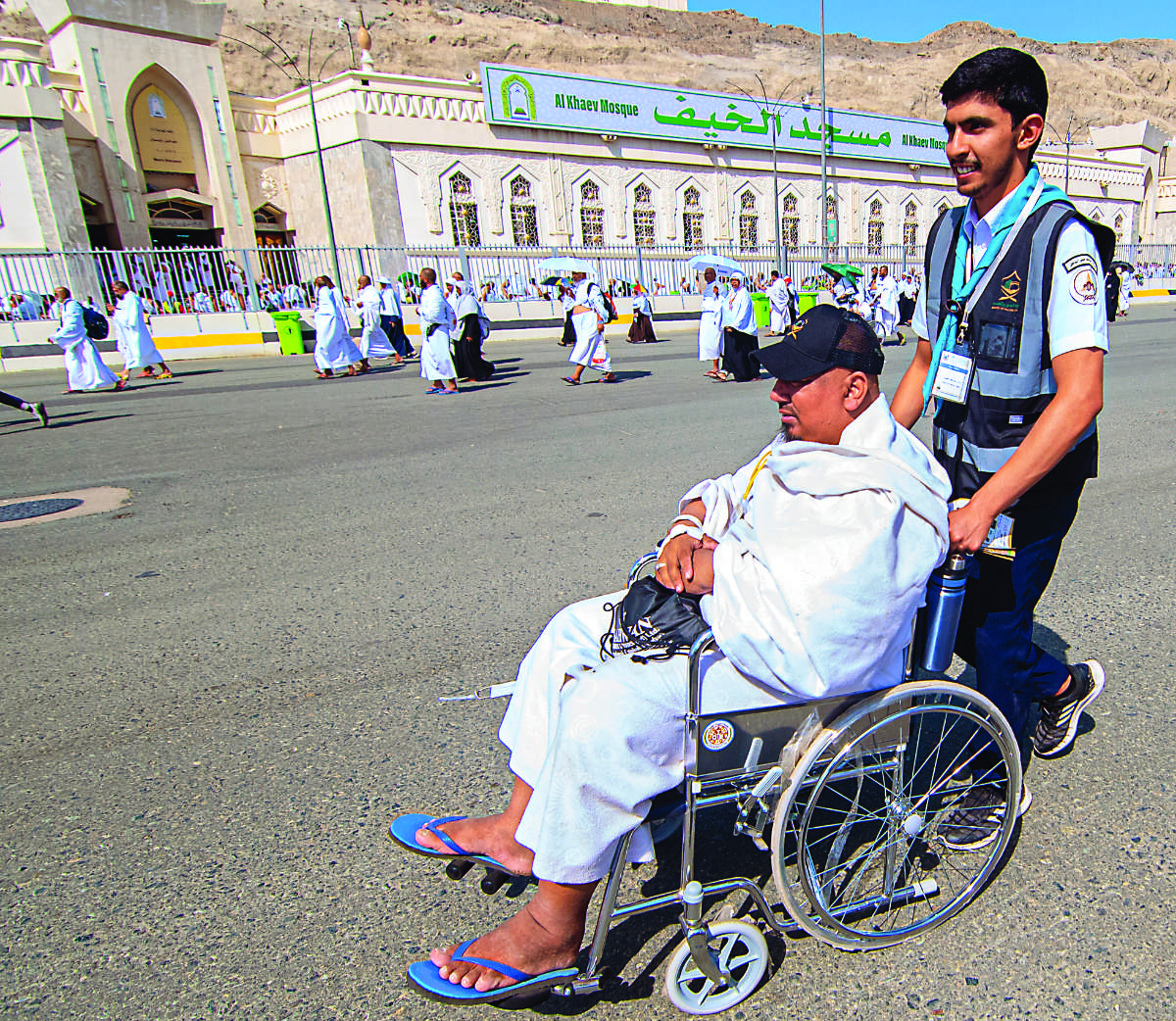
The scouts help pilgrims by guiding them, assisting them, and ensuring that they reach the holy sites or their designated camps. (AN photos by Huda Bashatah/Supplied)
The service then expanded to encompass scout groups from Arab and Islamic nations between the 1965 and 1974 Hajj seasons.
However, SASA then decided to reserve this honorable service exclusively for the sons and daughters of the Kingdom from 1975 Hajj onwards until today.
On Dul Hijjah 9, pilgrims left Mina and made their way to Mount Arafat for a day of prayer.
Volunteers and Saudi scouts were stationed along the roads with water, umbrellas and maps in hand, ready to assist the pilgrims in their 2.5 km walk to Mount Arafat.
“We are here to serve the pilgrims by leading them to their campsites so that they can reach them in the fastest and easiest way,” Yasser Al-Budaiwi, a Saudi scout, told Arab News.
“We also serve them in other ways, such as providing them with water, umbrellas, and food. This is our work, praise be to God,” Al-Budaiwi added.
This year’s Hajj is the largest gathering of pilgrims since 2019. On Tuesday, the General Authority for Statistics announced that the total number of pilgrims had reached 1,845,045.
Representatives from private companies such as DHL and STC accompanied the Saudi scouts in their work, giving out cool water, juice, laban and umbrellas.
Zamil Ghazawi, a team leader with DHL, told Arab News: “We began passing out umbrellas directly after Fajr prayer this morning and will continue doing so until 10:00 a.m.”
DHL brought 250,000 umbrellas to distribute among the pilgrims, he added.
“People are happy and relaxed, and they all stop by to take an umbrella,” Ghazawi said.



